- Home
- Encyclopedia
- Wyoming’s Uranium Drama: Risks, Rewards and Rem...
Wyoming’s Uranium Drama: Risks, Rewards and Remorse
The story of uranium in Wyoming is a high-stakes drama whose cast includes fever-driven prospectors, ranchers defending their property rights, government officials intent on national security, entrepreneurs, engineers and world-class mining companies.
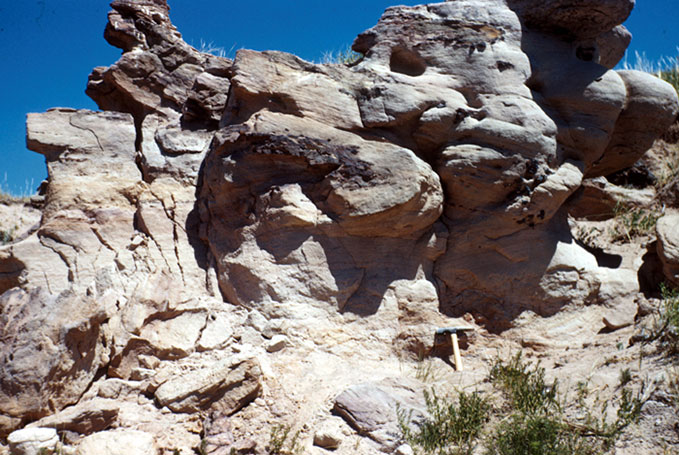
Uranium has been part of Wyoming’s economy since it was first discovered in the tailings of an abandoned silver mine near Lusk, Wyo. in 1918. After World War II ended with the explosions of two atom bombs, however, the Cold War began and the U.S. government cornered the domestic uranium supply with a guaranteed price to producers. The industry boomed, and uranium-rich Wyoming benefited.
Setting the stage
Uranium has a long history, both in terms of its geological significance and its importance for society. Wyoming has the largest uranium reserves in the United States, with known occurrences in 20 of the state’s 23 counties.
Though uranium is widely found in small quantities, it is necessary to find areas of high concentrations before mining is economically viable. Processed ore is often transported as a partially refined powder called yellowcake—a uranium oxide, U3O8. Uranium produced in Wyoming has already provided the energy equivalent to that of 5.9 billion barrels of fuel oil or 1.9 billion tons of coal. For comparison, Wyoming coal production in the early 2000s peaked at close to 450 million tons per year.
Yellowcake is currently produced at seven U.S. uranium facilities, three of them in Wyoming. From the 1950s through the 1980s, Wyoming uranium was mined mostly in strip mines. Now all production in the state is done by in-situ leaching, which involves injecting a water solution into the ground to bring the uranium to the surface.
The three Wyoming plants, located in Sweetwater County, Converse County and on the Campbell-Johnson county border, account for 81 percent of the nation’s production. The remainder comes from Nebraska, Texas and Utah. The Smith Ranch-Highland operation in Converse County, the largest uranium production facility in the nation, is owned by Cameco Resources, Inc. This plant produced 15 million pounds of U3O8 between 2002 and 2011.
The rush begins
Nearly 20 years after the discovery at the abandoned Silver Cliff mine near Lusk, uranium was discovered in the Red Desert of south-central Wyoming. But there was little market for it. Following World War II and the first military use of atomic bombs, however, the U.S. Congress established the Atomic Energy Commission (AEC).
In 1948, with tensions increasing between the United States and Russia at the start of the Cold War, the AEC issued a series of circulars providing for the procurement of uranium ores, setting minimum prices, bonuses for the discovery of new deposits, and other incentives for high-grade ores, haulage allowances, etc. Prospectors began scouring the West. Another Wyoming discovery occurred in the Black Hills of Crook County in 1949.
Conventional wisdom before 1950 held that uranium deposits originated with hydrothermal activity. But at that time U.S. Geological Survey geologists Denson, Bachman and Zeller hypothesized that uranium came from thick volcanic ash beds that covered Wyoming’s landmass more than 35 million years ago. The beds were laid down by eruptions of ash from the once volcanic mountains that now make up the Absaroka Range in northwestern Wyoming.
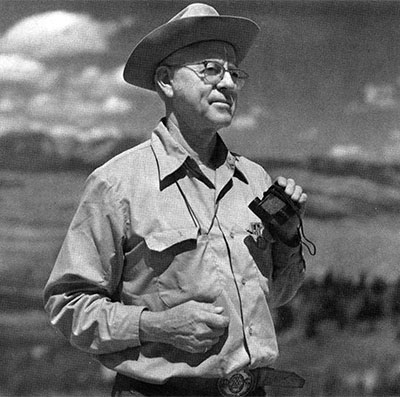
Another USGS geologist, J. David Love, further researched this theory and decided it was time to see if it would produce results. In 1951, Love took to the air to conduct an aerial check of the Pumpkin Buttes country of the Powder River Basin in southern Campbell County. Later, along with his colleagues, he conducted on-the-ground fieldwork to confirm what he had noted as uranium “hot spots.”
The flanks of Pumpkin Buttes indeed had very impressive concentrations of uranium. The find was important geologically as it appeared to verify the hypothesis of ash-sourced uranium deposits. Now it appeared that uranium could possibly exist in nearly all parts of the state. But the find was important commercially, too—and the commercial possibilities led to conflict, and even threats of violence.
High stakes at Pumpkin Buttes; National Guard alerted
Love’s discovery ultimately led to uranium fever: Prospectors and ranchers postured for potential stakes, but the ultimate beneficiaries of this find were lawyers. What historian T.A. Larson calls “the complex pattern of rights to land and minerals” in Wyoming led to confusion in all directions. Lands patented early on in the West usually conveyed both surface and subsurface rights to the owners. However, subsequent laws in 1909 and 1916 conveyed only surface rights, reserving minerals to the government. Those mineral rights remained available to mineral interests—anyone who staked a claim, even if the surface was privately owned. Further complicating matters, the state owned smaller amounts of land scattered through all the counties. Under state-owned land usually mineral rights were reserved for the state.
In March 1952, the federal government withdrew more than 65,000 acres of federal land in the Pumpkin Buttes area from availability for public entry—the staking of claims—under the mining laws. After a survey, government officials set May 3, 1955, as the date for reopening that land to the public.
Prospectors prepared to stake claims. Ranchers, who owned the surface but not the minerals below, worried that the likely throng of people racing for uranium would damage the lands. The ranchers declared they would use force to protect their properties, if necessary. Wyoming Gov. Milward Simspon, concerned about a possible outbreak of violence, alerted the National Guard. The federal government delayed the reopening of land to the public until November 1955.
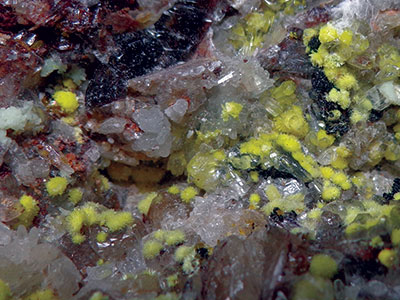
In the interim, ranchers formed the Pumpkin Buttes Mining District. Under its terms, instead of filing claims with the county clerk, prospectors were required to file with the district, which had set aside more than 46,000 acres. In addition, those filing claims also promised to pay those who owned surface rights a royalty on production. Larson noted that 400 prospectors—more than the number of people who lived there—entered the area on the opening day.
Fortunately, no violence occurred. The legal complexity of surface, subsurface and other rights, however, brought numerous lawsuits. Most prospectors did not reap financial gains from their claims. If they found a producible quantity, they didn’t have the necessary resources to develop the claims. Eventually, larger companies, some headed by Wyoming entrepreneurs, raised capital to purchase the better claims, and the Wyoming Supreme Court declared the Pumpkin Buttes Mining District illegal.
Lucky Mc and Bob Adams strike it rich
On Sept. 13, 1953, while antelope hunting and prospecting with his wife, Maxine, Neil McNeice of Riverton, Wyo., using a powerful field glass, spotted a thick yellow layer in a cliff. He took samples, and officials at the AEC office in Douglas, Wyo., confirmed his discovery of uranium. He filed the claim for the Lucky Mc, located in the Gas Hills of eastern Fremont County, about 75 miles northwest of Rawlins, Wyo., and 35 miles south of Moneta. By mid-October, 140 other claims had been filed nearby, and by 1955, claims in Fremont County totaled 7,000.
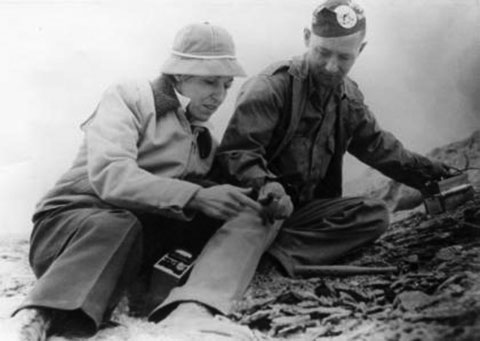
Rawlins businessman and restaurant owner Robert W. “Bob” Adams’ had been hearing a lot of uranium talk by USGS geologists who came into his restaurant after exploring in the nearby hills. Adams’ interest in uranium was piqued when he had read about a $1 million strike near Moab, Utah, in 1952 by prospector Charlie Steen. When he learned of McNeice’s good fortune, Adams himself began searching for ore deposits in the hills north of Rawlins.
He fixed radiation detectors that could signal occurrences of uranium in the ground to the wings of his private plane. In 1954, Adams found uranium in the Crooks Gap area, in the Green Mountains south of the Sweetwater River and north of the Red Desert. He formed the Lost Creek Oil and Uranium Company.
Adams also found a wealthy physician, C.W. Jeffrey of Rawlins, to serve as his financial backer. Adams bought property just south of the river near a post office and gas station called Home on the Range, on U.S. 287/Wyoming 789, the highway from Muddy Gap to Lander. Adams soon christened the place Jeffrey City in honor of the man who had provided him with capital.
With Jeffrey’s help, Adams was also able to build the nearby Split Rock Mill in 1957, the first uranium mill in Wyoming. Ore for the Split Rock Mill came from both the Gas Hills and Crooks Gap areas. In 1958, a year after the Split Rock Mill opened, according to historian Larson, more Wyoming mines opened after producers signed contracts with the AEC: three at the Gas Hills (two at Gas Hills west in 1958 and one at Gas Hills east in 1960) north of the Sweetwater River, two in Shirley Basin far to the east, and one each at Crooks Gap and Riverton.
Larson writes that in the 1950s and 1960s, the most productive mines developed were in eastern Fremont County at the Gas Hills and Crooks Gap and in Shirley Basin of northeastern Carbon County. In the 1960s, Larson explains, more than half of Wyoming’s production occurred in Fremont County, and “Riverton claimed to be the uranium capital.”
Jeffrey City: A yellowcake boomtown comes and goes
Adams renamed his company Western Nuclear, Inc., in 1957, and Jeffrey City—like many other similar towns in western states—grew from a trailer town to a thriving community as the mining and processing of uranium increased. According to information released by the U.S. Nuclear Regulatory Commission, Western Nuclear used a variety of methods—including acid leach, ion exchange and solvent extraction—to process about 8 million tons of uranium ore between 1957 and 1981. The Split Rock Mill, originally designed to process 400 tons of ore daily, was expanded throughout the 1970s and increased production to 1,700 tons daily.
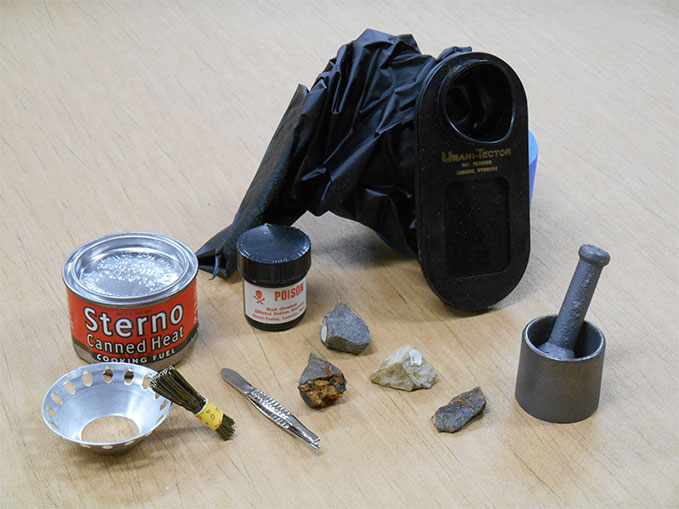
Jeffrey City, built by Adams’ company, quickly grew to include 26 houses, 145 trailers, a dormitory, a restaurant and bar, bathhouses and a combination firehouse and dispensary. One large structure served as a community meeting place, the local school, Laundromat, church and movie theater. Western Nuclear provided the town manager and a road maintenance crew. By mid-summer 1957, with new mining hires, the town was planning for nearly 200 families to join the community, which would have increased the population to more than 750 residents.
The fortunes of the residents of Jeffrey City followed the slumps and rebounds of the uranium industry. Because uranium is of strategic importance to the nation, governmental policies affected mining, processing and price. But in the early 1960s, with tens of thousands of nuclear devices in U.S. stockpiles, government demand for uranium for weapons began tapering off.
In 1964, President Lyndon B. Johnson authorized a “stretch-out” program to help avoid overproduction of uranium. The government would extend its price guarantees through 1970, rather than to 1966, to mill operators who reduced their annual production. Historian Larson reported that despite the new policy, production actually increased. Bob Adams sold Western Nuclear to Phelps Dodge, a mining conglomerate, in the 1960s.
But now there was a peaceful market for uranium—to burn in nuclear power plants to make electricity. As more nuclear power plants were built throughout the nation in the 1970s, huge utility companies contracted for long-term deliveries of yellowcake. Though no nuclear plants were built in Wyoming, the renewed interest in the industry sparked more exploration. The price of yellowcake skyrocketed from its 1950s and 1960s value of $8 or $10 per pound, to more than $50 per pound in 1977.
By 1980, more than 4,000 people lived in Jeffrey City, with more than 1,000 employed in the industry. About 600 students attended the school.
But a partial meltdown at the Three Mile Island plant near Harrisburg, Pa. in March 1979 dealt a blow to the uranium industry from which it has yet to fully recover. Suddenly, nuclear power was perceived as dangerous. Yellowcake prices plummeted. In 1981, the Split Rock Mill was placed on standby. By 1988, Jeffrey City was mostly vacant. In September 1988, the mill was decommissioned. Eventually it was dismantled and its components buried. Surface reclamation was completed in the mid-2000s.
The drama continues
The March 2011 earthquake, tsunami and subsequent radiation leaks at the Fukushima nuclear plant in Japan have dealt a second serious blow to the recovery of uranium prices worldwide. According to information released by the U.S. Nuclear Regulatory Commission, Kennecott Uranium Company and Wyoming Coal Reserve Company’s Sweetwater Uranium Project mill in Sweetwater County is set to produce 3,000 short tons of ore per day, but is on standby status at this time.
Two other mills, both in Fremont County, are as yet undeveloped. A report based on information from the Wyoming State Geological Survey and published in the Casper Star-Tribune in the fall of 2012 indicated there are 27 uranium projects in various stages of development in Wyoming. Many of these list in-situ recovery as the planned mining method; however, a few listed open pit mining as the extraction technique.
And the stage continues to be international in scope. According to a report published in the Casper Star-Tribune in mid-January 2013, a Russian company planned to purchase Uranium One, a developer of some of the Wyoming uranium projects. Company officials said that no Wyoming uranium would be exported to Russia. According to the article, Wyoming’s Republican Sen. John Barrasso continues to monitor the situation.
As of October 2019, the global market price for uranium is about $24 per pound, down from the peak price of $130 per pound in 2007. During first quarter 2019, Wyoming produced 58,000 pounds, down from 227,000 pounds for the same period in 2018.
Resources
- Amundson, Michael A. Yellowcake Towns: Uranium Mining Communities in the American West. University Press of Colorado, 2002, 17-49.
- Chenoweth, W.L. “A summary of uranium production in Wyoming.” Wyoming Geological Association 42nd Annual Field Conference Guidebook. Casper, Wyo.: Wyoming Geological Association, 1991. 169-179.
- Erickson, Camille, and Nick Reynolds. "International uranium battles could mean windfall for Wyoming mining interests." Casper Star-Tribune, July 1, 2019. Accessed Dec. 31, 2019, at https://trib.com/business/energy/international-uranium-battles-could-mean-windfall-for-wyoming-mining-interests/article_3857b028-bf00-5d98-ab35-9dcaa0678014.html.
- Erickson, Camille. "Wyoming's ailing uranium sector needs an emergency boost, industry says." Casper Star-Tribune, October 18, 2019. Accessed Dec. 30, 2019, at https://trib.com/business/energy/wyoming-s-ailing-uranium-sector-needs-an-emergency-boost-industry/article_d25ebd49-1623-5f4a-b0e2-d0297b4999e6.html.
- Fugleberg, Jeremy. “Russia seeks full buyout of Uranium One.” Casper Star-Tribune, Jan. 15, 2013. Accessed April 2, 2014, at http://trib.com/business/energy/russia-seeks-full-buyout-of-uranium-one/article_995e957f-29a2-58aa-b73f-1c2d2931e5a4.html.
- Galloway, Winifred. “History of Uranium in Wyoming.” Master’s thesis, University of Wyoming, 1961.
- “General Mining Act of 1872.” Accessed April 2, 2014, at http://en.wikipedia.org/wiki/General_Mining_Act_of_1872.
- Gregory, Robert. “Wyoming’s Uranium Resource: Summary Report, February 2014.” Laramie, Wyo.: Wyoming State Geological Survey. Accessed May 7, 2014, at http://www.wsgs.uwyo.edu/public-info/onlinepubs/docs/Uranium-Summary.pdf. A short, clear report with good graphics.
- Larson, T. A. History of Wyoming. 2nd ed., rev. Lincoln, Neb.: University of Nebraska Press, 1978, 514-517.
- Love, J.D., “Preliminary report on uranium deposits in the Pumpkin Buttes area, Powder River Basin, Wyoming.” U.S. Geological Survey Circular 176 (1952).
- McPhee, John. Annals of the Former World. New York: Farrar, Straus and Giroux, 1998, 282.
- Roberts, Phil, David L. Roberts and Steven L. Roberts, eds. Wyoming Almanac. Laramie, Wyo.: Skyline West Press, 2001, 294-295.
- “Smith Ranch-Highland.” Accessed April 1, 2014, at http://en.wikipedia.org/wiki/Smith_Ranch-Highland.
- U.S. Energy Information Administration. “Domestic Uranium Production Report—Quarterly,” 4th Quarter 2013. Report released Jan. 31, 2014. Accessed March 26, 2014, at http://www.eia.gov/uranium/production/quarterly/.
- U.S. Nuclear Regulatory Commission. “Western Nuclear—Split Rock Uranium Recovery Facility.” Accessed March 26, 2014, at http://www.nrc.gov/info-finder/decommissioning/uranium/is-western-nuclear-inc.pdf.
- Voge, Adam. “Uranium Projects in Wyoming.” Casper Star-Tribune, Sept. 27, 2012. Accessed April 1, 2014, at
- http://trib.com/business/energy/uranium-projects-in-wyoming/article_d0685c1a-6a36-5fac-b84b-fba3459d4c1a.html.
- Wilson, William H. “Uranium, Thorium and Rare Earths.” Mineral Resources of Wyoming. Bulletin No. 50. Laramie, Wyo.: Geological Survey of Wyoming, April 1966, 201, 202.
- Wyoming State Historic Preservation Office. “Gold Flakes to Yellowcake Historic Mine Trail.” Wyoming Historic Mine Trail and Byway Program. Accessed March 26, 2014, at http://www.wyoshpo.state.wy.us/pdf/GFbrochure.pdf.
For further research
- See this video of a 1957 conversation on atomic energy and the Wyoming economy, hosted by Wyoming’s U.S. Senator Joseph O’Mahoney, a Democrat. The senator speaks with two staffers from the Atomic Energy Commission—information officer Shelby Thompson, formerly of Cheyenne, and Jesse Johnson, chief of the raw materials branch of the AEC and thus in charge of securing uranium sources around the nation and the West. The video, in the collections of the American Heritage Center at the University of Wyoming, runs just under 14 minutes.
Illustrations
- The 1953 photo of the uranium-manganese concretions is from the U.S. Geological Survey photo library. Used with thanks.
- The 1953 photo of Maxine and Neil McNeice is from the collections at the Riverton Museum. Used with thanks.
- The photo of David Love is from the dedication page of the Wyoming Geological Association’s 1980 Guidebook. Used with thanks.
- The closeup of the uranium-bearing mineral from Brazil and the photo of the Urani-Tector are both from the collections of the Wyoming Geological Survey, and provided by the author.
- About the device, the state geologist’s office adds:
- The Urani-Tector (CMG Industries, Laramie, Wyo, 1955) provided the novice with an inexpensive means of prospecting for uranium and provided the professional prospector with a daylight "black light" unit and chemical tests in addition to his geiger and scintillation counters. When a fluorescent uranium rock (such as autunite, or torbernite) is placed under the Urani-Tector in daylight the uranium will glow a yellow-green. The chemical apparatus in this kit is to make the uranium in non-fluorescent ores (such as carnotite, or pitchblende) become fluorescent and thus glow under the Urani-Tector. The brighter the glow the higher the percentage of uranium.
